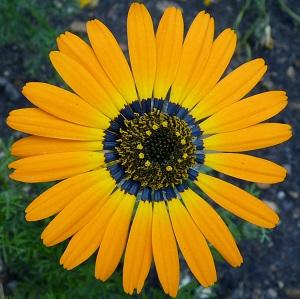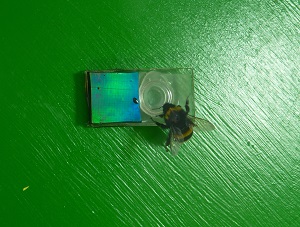
Disorder in convergent floral nanostructures enhances signalling to bees
There is a long-lasting love story between flowering plants and the animals that pollinate them. The success of this relationship relies on a good communication between the two partners. A multidisciplinary team of biologists and physicists including Edwige Moyroud, SLCU newest group leader, recently discovered a new element of such communication in which petals can produce a ‘blue halo’ that helps bees to find flowers.
The team used the plant collection of Cambridge University Botanic Garden and Kew Garden in London and identify that several common flower species have nanoscale ridges on the surface of their petals that meddle with light when viewed from certain angles.
These nanostructures line up next to each other on the petal surface “like a packet of dry spaghetti” but, when analysing different flower species, the physicists discovered they vary greatly in height, width and spacing. Yet all of these ‘disordered’ microsocopic structures scatter light particles in the blue to ultraviolet colour spectrum, producing a similar ‘blue halo’ effect. By manufacturing artificial surfaces that replicated ‘blue halos’, the biologists were able to test the effect on pollinators, in this case foraging bumblebees. They found that bumblebees can see the blue halo, and use it as a signal to locate flowers more efficiently.
 The article, recently published in Nature, highlights that these “messy” petal nanostructures likely evolved independently many times across flowering plants, but reached the same luminous outcome that increases visibility to pollinators – an example of what’s known as ‘convergent evolution’. These findings open up new opportunities for the development of surfaces that are highly visible to pollinators, as well as exploring just how living plants control the levels of disorder on their petal surfaces to produce such optical tricks.
The article, recently published in Nature, highlights that these “messy” petal nanostructures likely evolved independently many times across flowering plants, but reached the same luminous outcome that increases visibility to pollinators – an example of what’s known as ‘convergent evolution’. These findings open up new opportunities for the development of surfaces that are highly visible to pollinators, as well as exploring just how living plants control the levels of disorder on their petal surfaces to produce such optical tricks.




